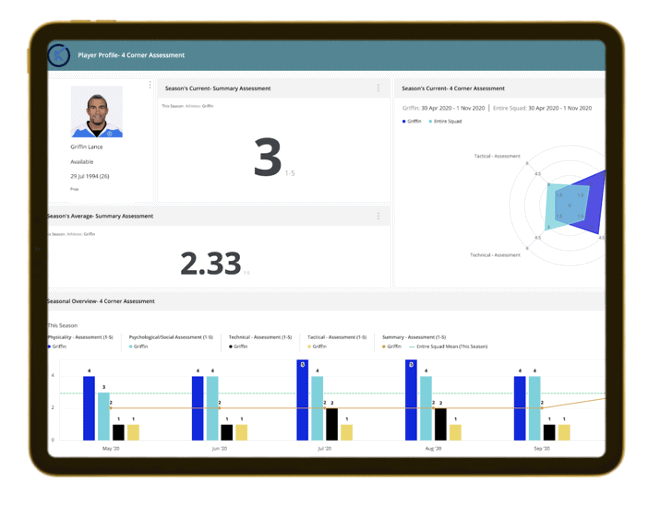Players are complex, the game is complex. Load is just one component. And numbers matter as does coaching instinct, experience and perspective.
Creating a complete picture of your players requires not only the ability to integrate all of your data together, but also perspective and context from coaches, S&C staff, trainers on games, training, development and more.
To create this complete view, teams are adopting processes to add such context during or after a game, practice, gym session coaches. Catapulting beyond data collection through forms, they are using more advanced assessment capabilities to add comments and notes on top of metrics – – load, performance, testing, reps and sets and more – to capture and store what they see that the metrics don’t convey. They are creating ratings, reviews on the field, in their offices, or on the go.

This centralized, structured rating, review, and assessment system enables transparency and collaboration, while encouraging communication and accountability for staff as they have a deeper understanding and a more holistic view of an athlete.
Side bonus – teams that take this approach rapidly build up information about players, without a lot of tracking or testing technology investments.
Action Speaks Louder than Metrics Alone
Then what? How does this idea of transparency and accountability translate into action? The first step is evaluating a player’s status and progress through a holistic view of their players. This empowers trend monitoring, benchmarks against others players, and status against and expected standards.
Teams are doing this by position, leveraging flexible reporting tools that allow them to customize by position in just a few clicks.

From there, teams are creating individualized training and development plans to focus on the key areas of improvement needed.
Specific notes and expected actions ensure everyone – coaches, athletes, staff – is on the same page with the agreed to plan for each player.

Measure Progress, How You Want, When You Want
As individual action plans are implemented, it’s critical to measure early and often across all aspects of your players to see what’s working and what isn’t.

It’s also important to be prepared for the questions that will come in from a variety of different people. Flexibility to quickly spin up a new view with different metrics, benchmarks, or profile information will keep you and the extended members your team operating at the speed of sport, with the objective information that supports and enhances instinct and experience.





